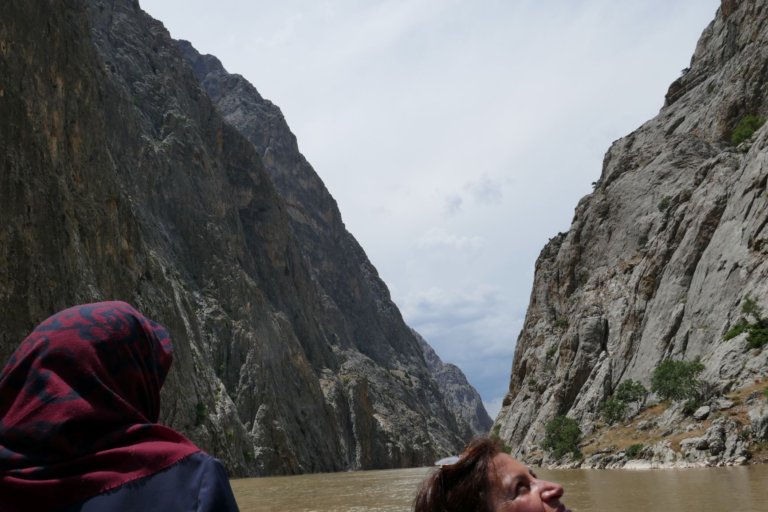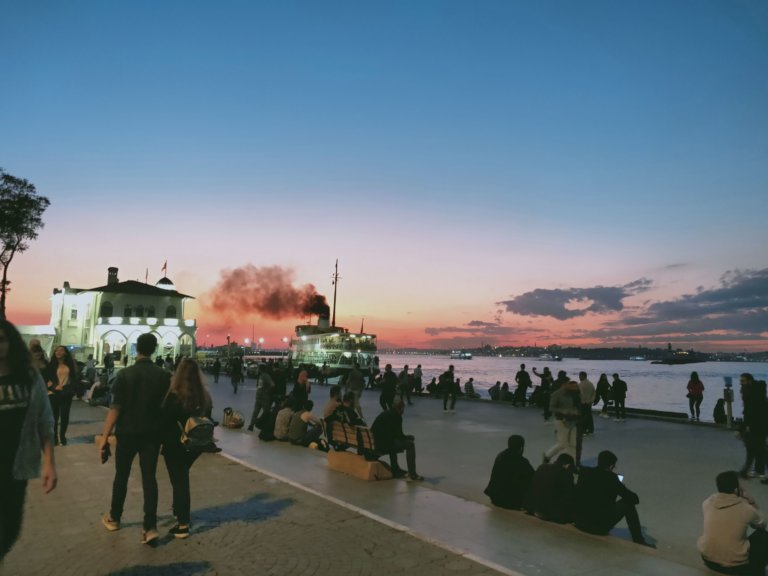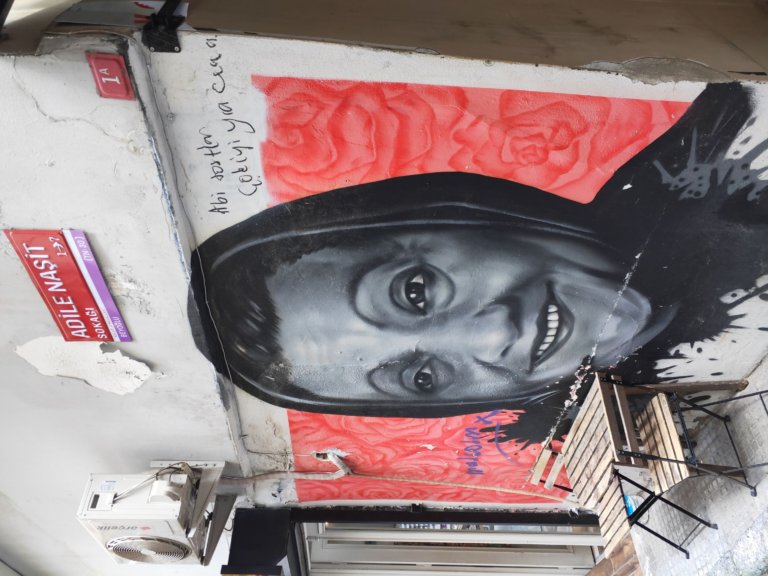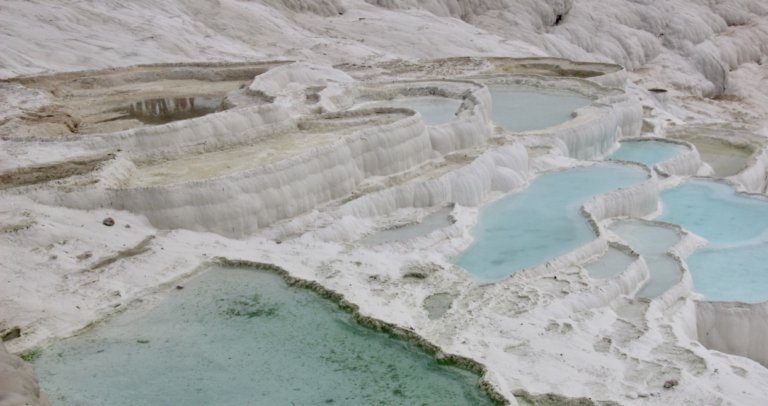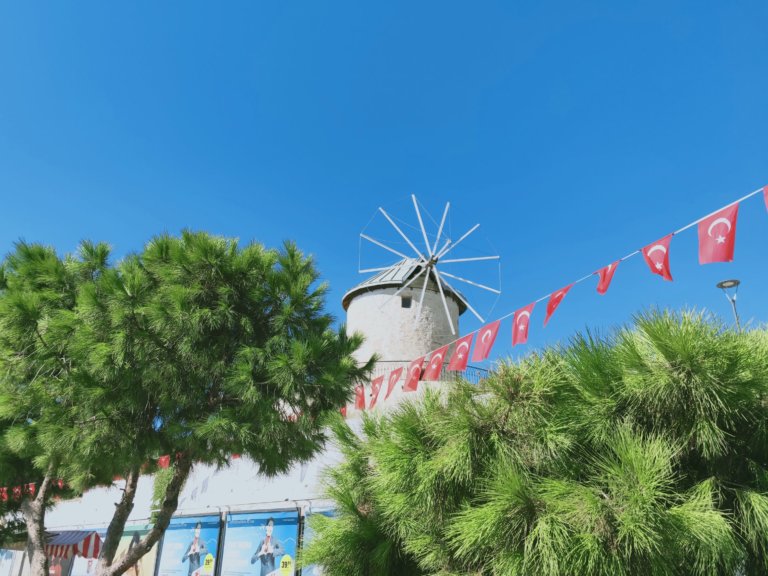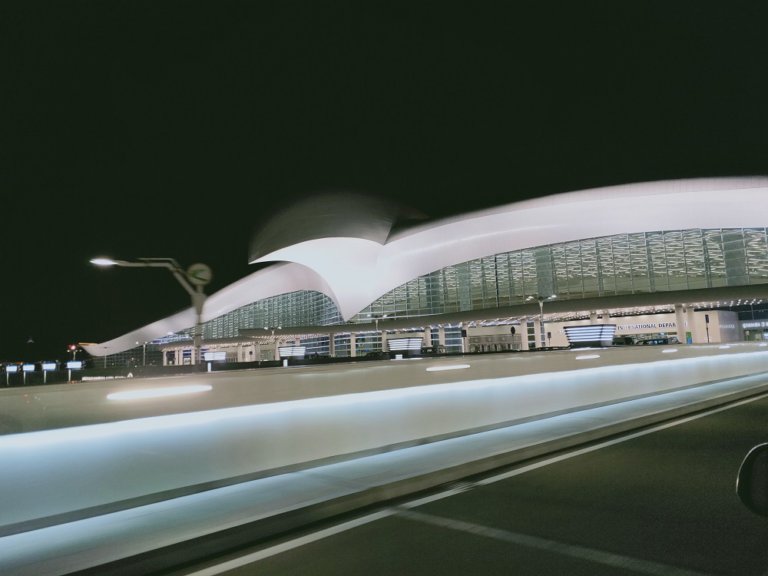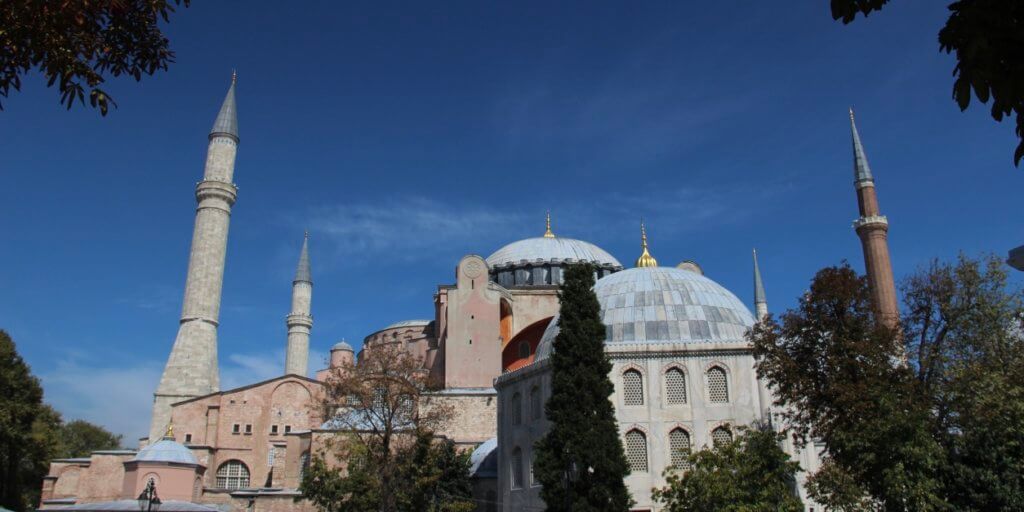
Day 147 23 September Istanbul
Back in Istanbul after our coastal journey, we decided to revisit the Hagia Sophia (Holy Wisdom) that had made a huge impression when we were here two years ago. We decided to buy a “skip the queue” pass which also included a one hour guided introduction. I have to say that what we saw justified the purchase as the ticket purchase queue was horrendous and the introduction was useful as it led us to key points.
Whilst difficult to truly comprehend the shape of the building close up, inside it is huge and everywhere you turn is something more to discover.
The mystique of the building is that represents a potted history of Istanbul and Turkey. The first building was a giant cathedral of the Greek Orthodox Church by the Byzantines which was called the Megale Ekklesia (Big Church). It was built in 360 AD when Istanbul was called Constantinople after the previous emperor. It was destroyed by fire as a result of riots in 404 AD and a second church was rebuilt in 415 BC. This building was also damaged again as a result of riots and the emperor Justinian ordered it demolished in 532BC and this third building which stands today was finished in 537 AD. However, in 1453 the Ottomans arrived converted the church into a mosque and created an empire which lasted into the 20th century. They also renamed the city Istanbul. In 1935 yet another change occurred when the new president of the Turkish Republic Ataturk converted the building into a museum. This was an example of his policy of secularisation which is apparently still being challenged by a movement to returning it to being a mosque.
This description of the Hagia’s is, of course, simplistic but is an attempt to highlight its importance to modern-day Turkey and also presents as a challenge to the visitor. The complexity of its history is reflected in the building itself and to get the full value of a visit wandering around is recommended. After an hours introduction, we did that and found all kinds of interesting pieces of architecture, mosaics, and different perspectives of the interior. A full history is here Hagia History
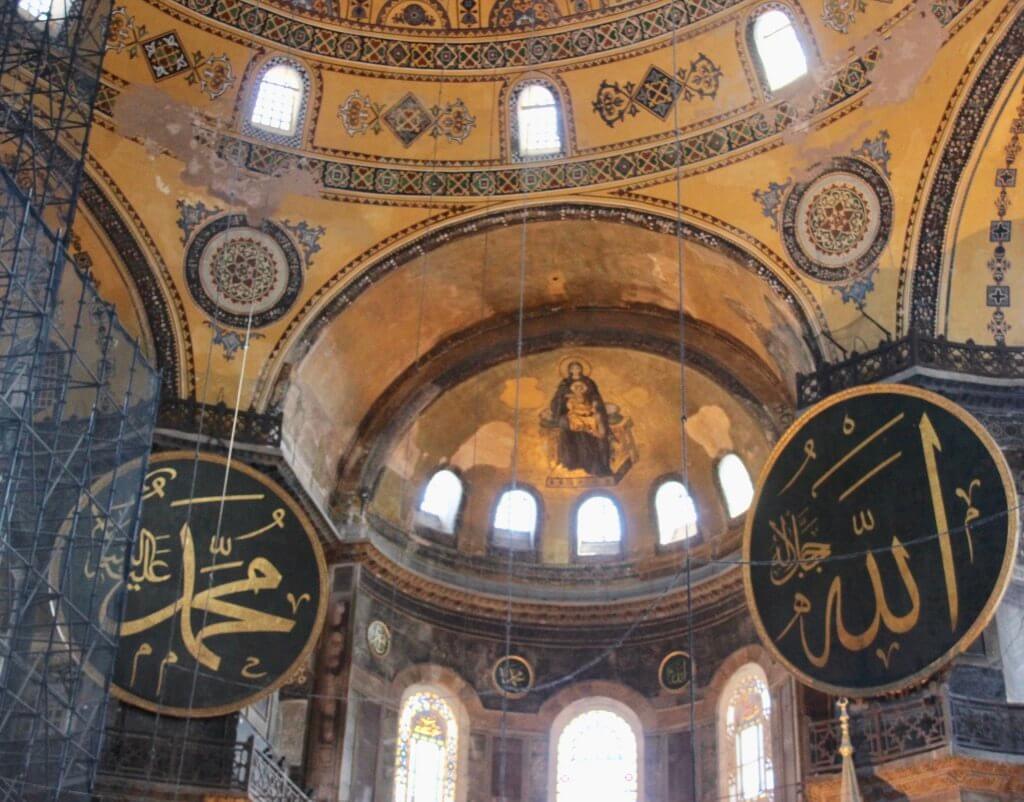
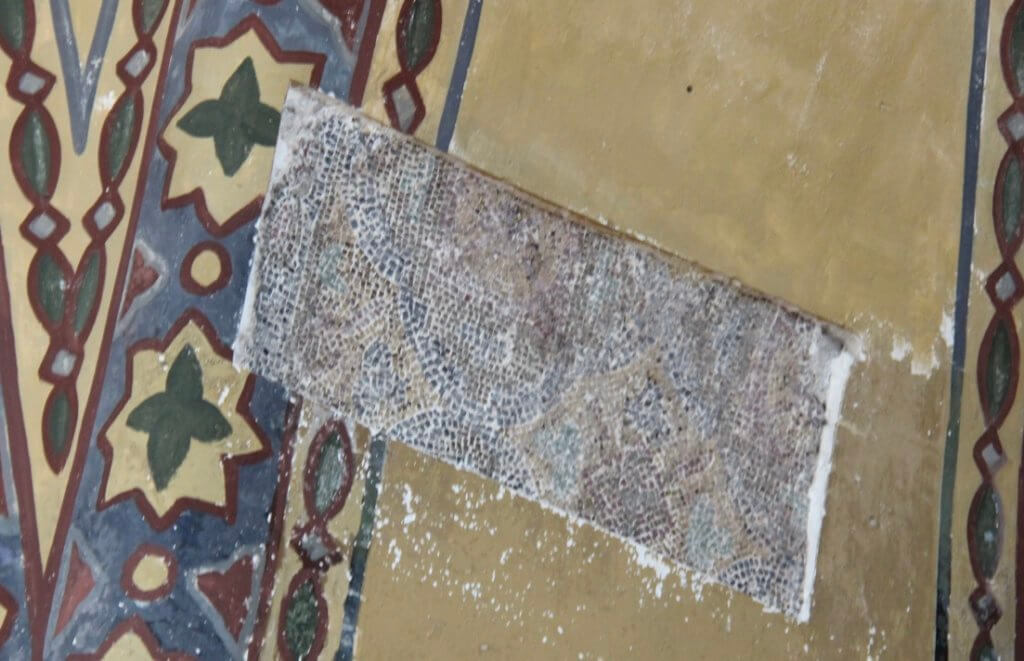
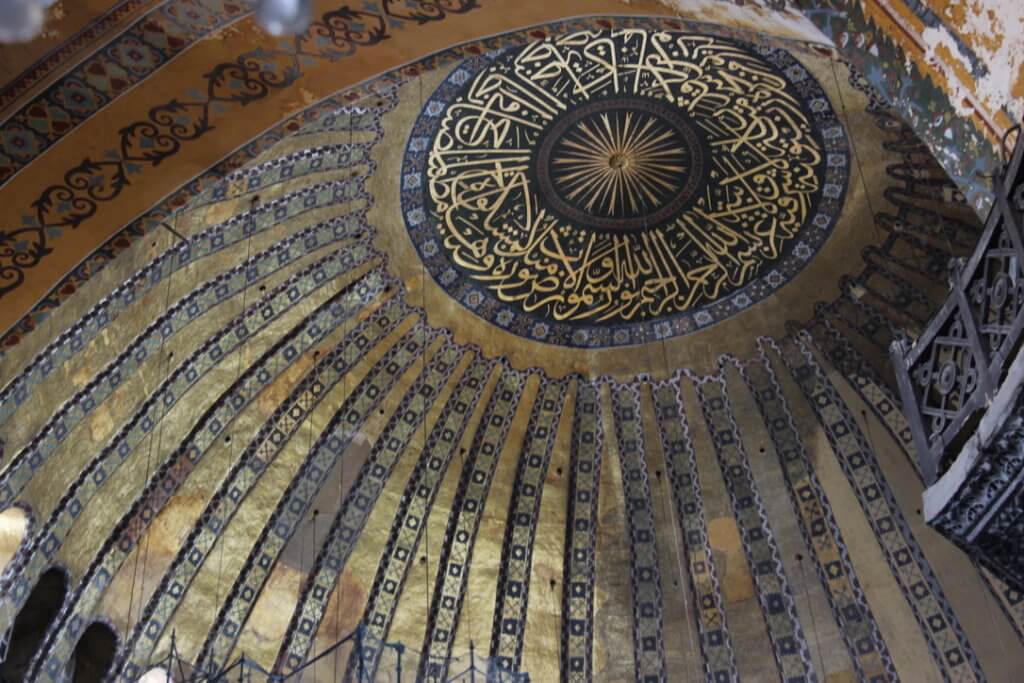
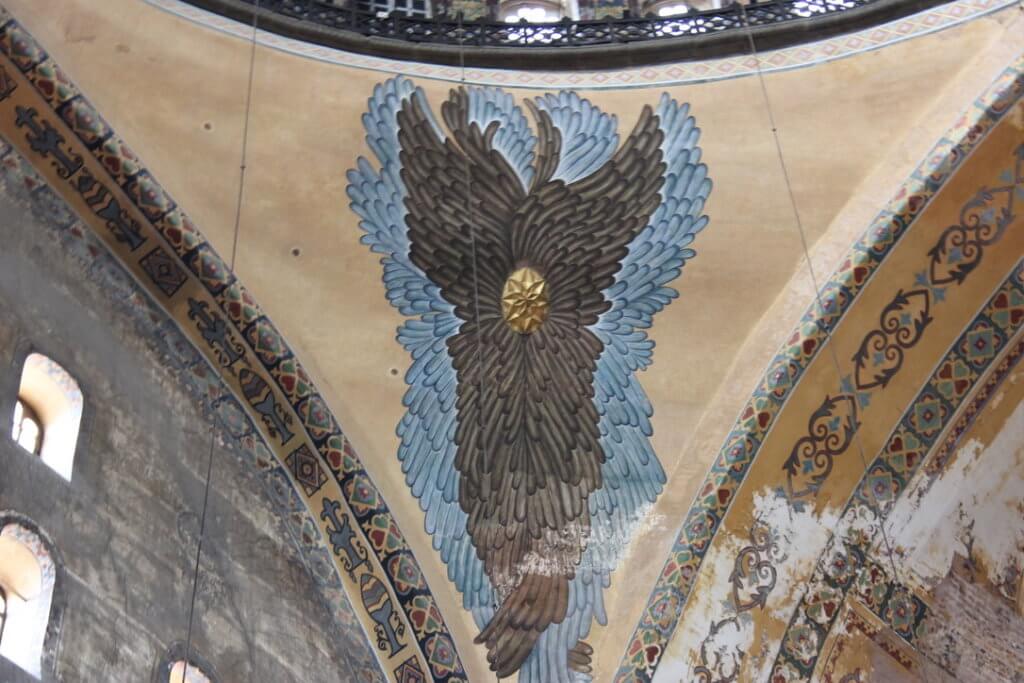
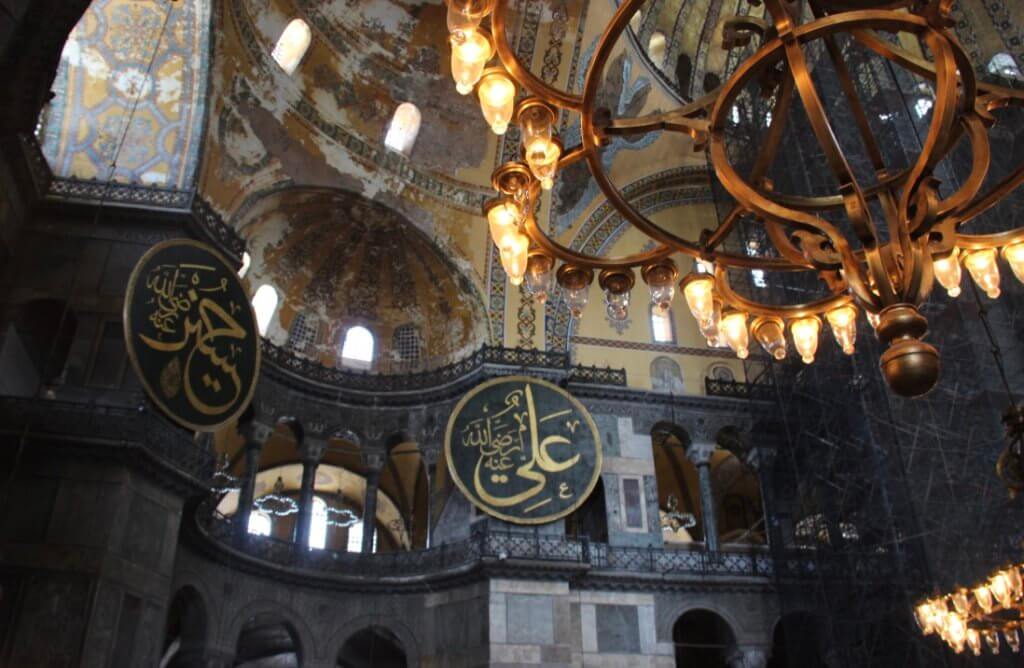
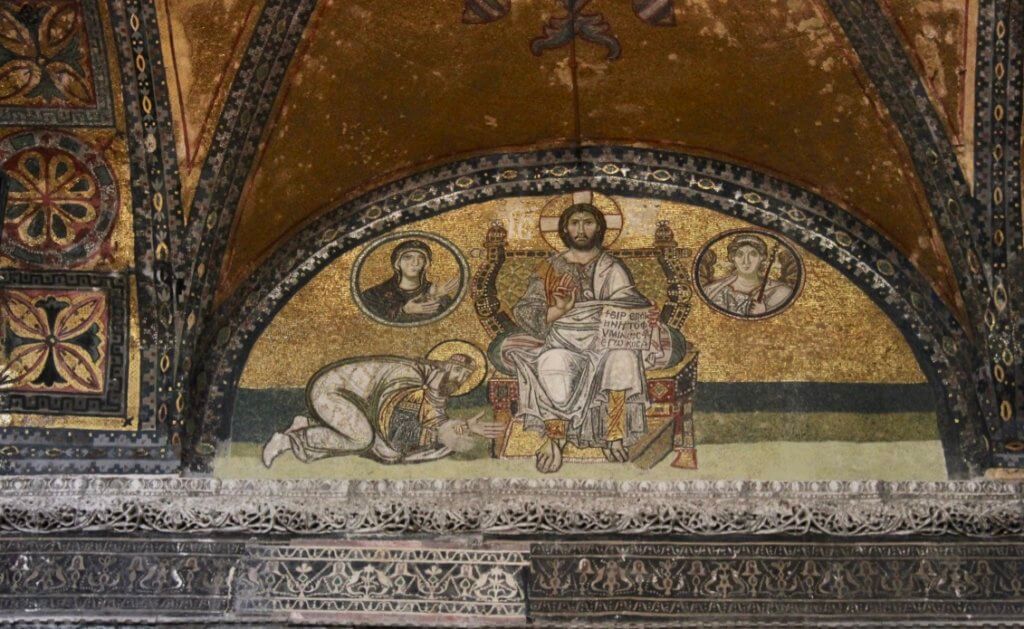
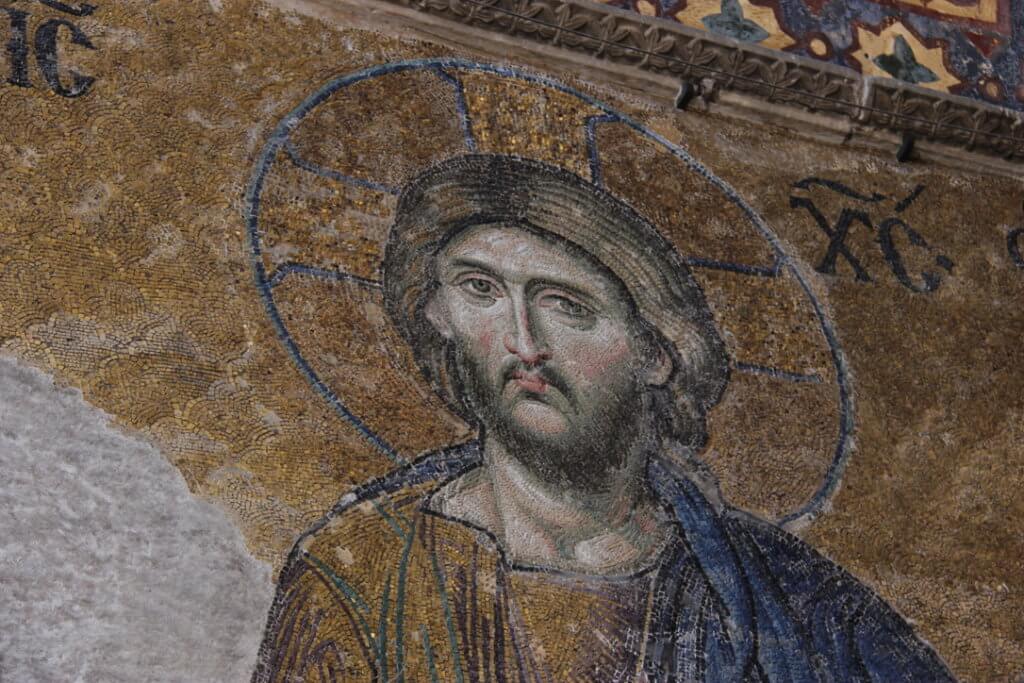
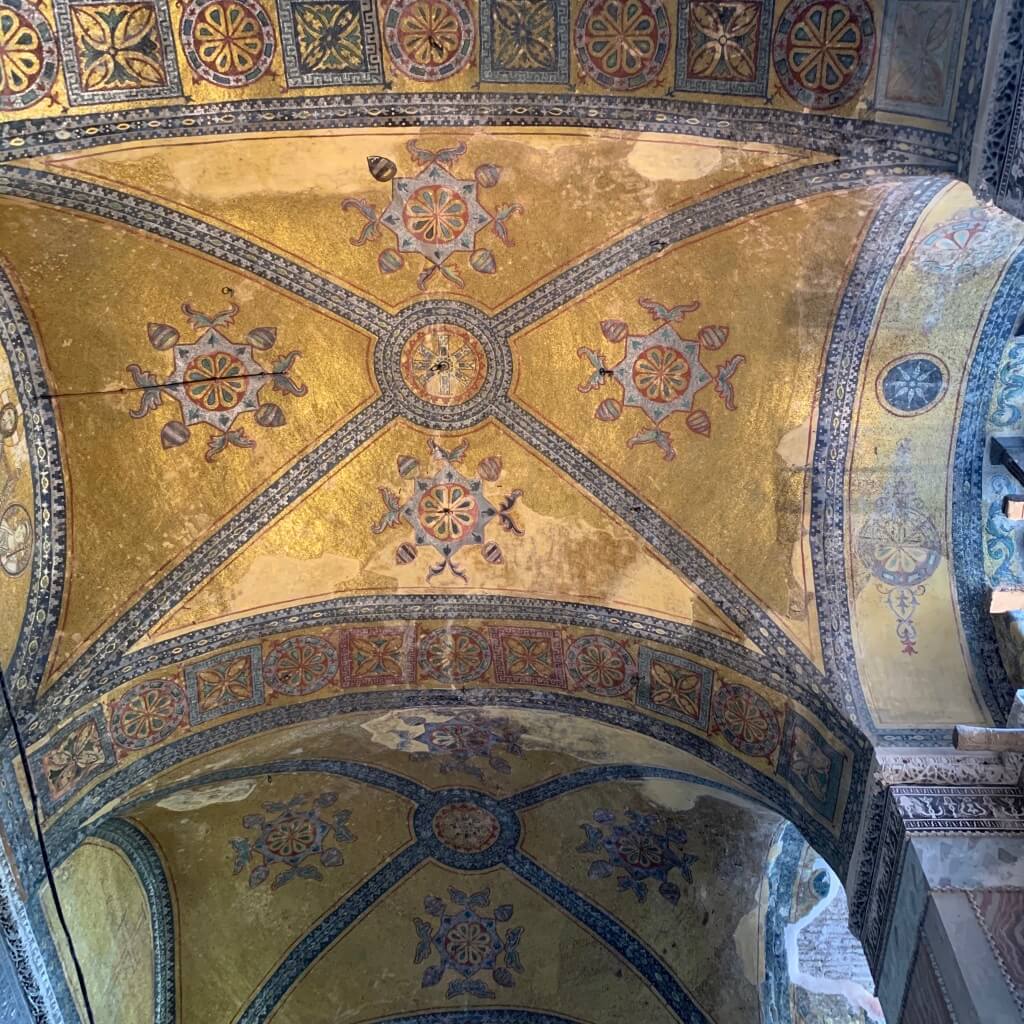
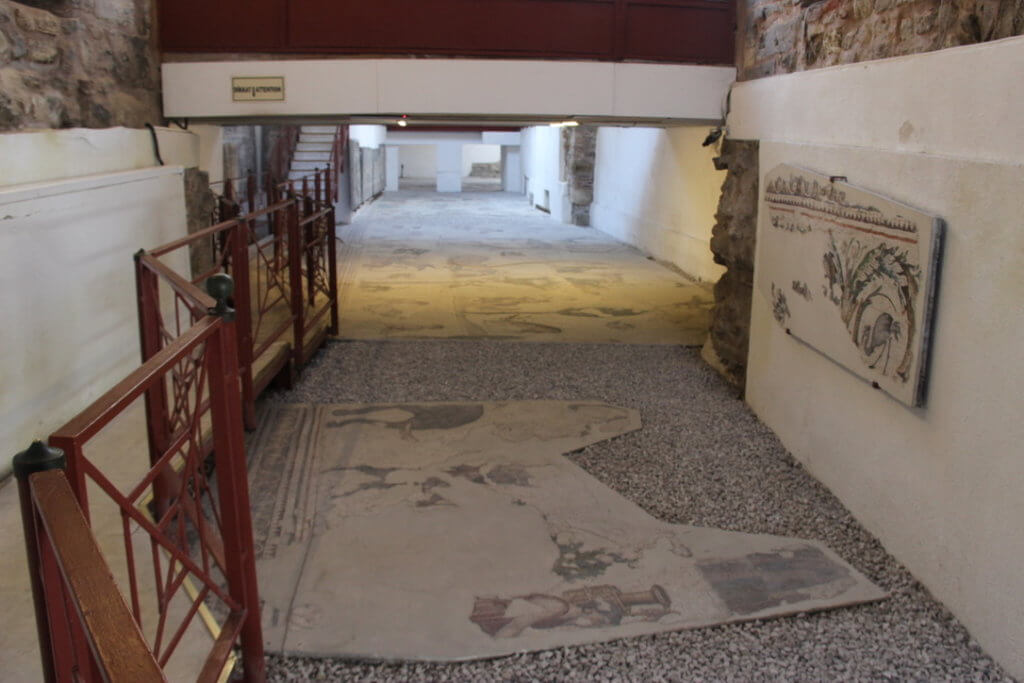
We then visited the Mosaic Museum where flooring from the Roman period was featured. Here one was just overwhelmed by the thought of 80 million pieces of stone being utilised to layout the pictures.
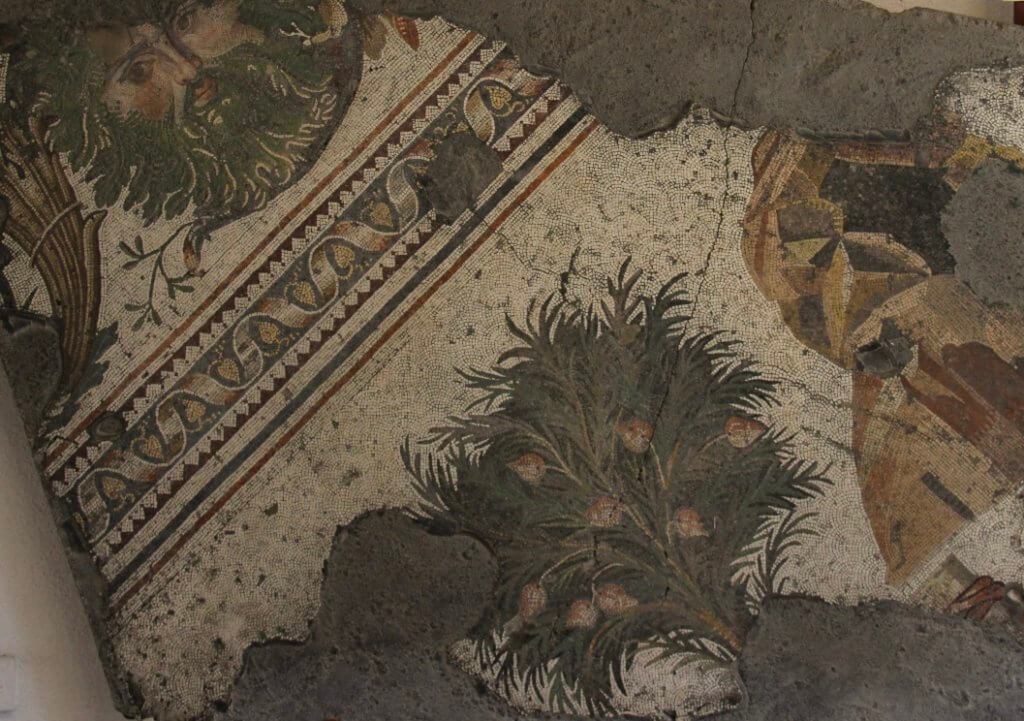
Our final part of the day led us to the Grand Bazaar and a hunt for the original covered area. It is truly an amazing place labyrinthine and full of carpets, food and genuine fake watches also called replicas. Here you can get a Rolex for about six hundred and fifty dollars US.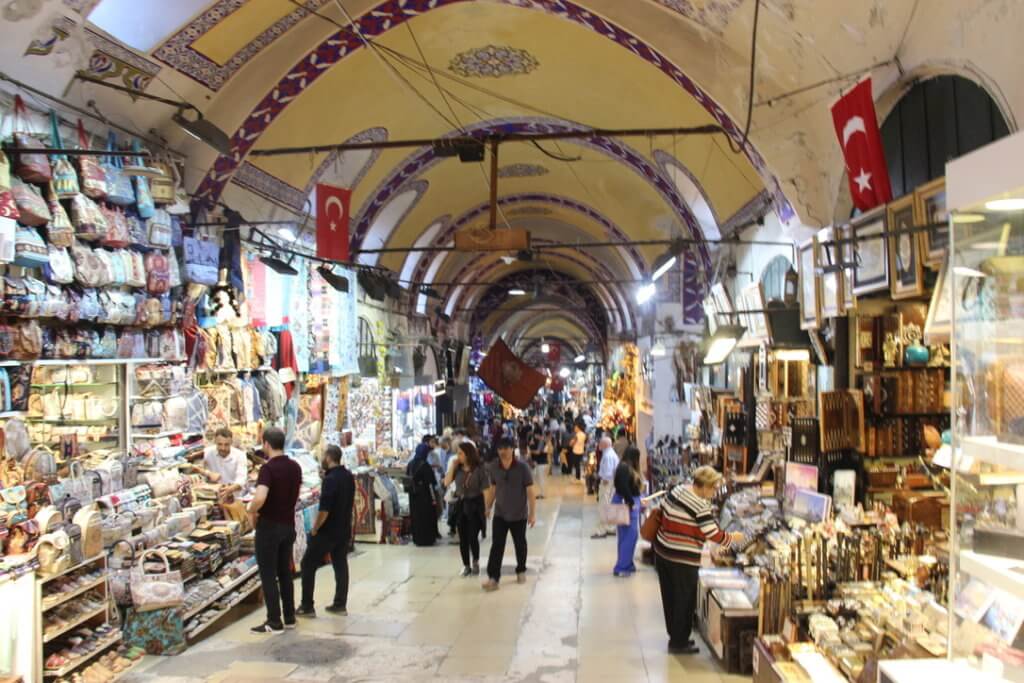
Travel Tips
Get a “skip the queue” pass we used the Go to Guide app.
Buy an Istanbul kart for public transport from an auto machine or selected shops.
See a handy map made by Erlan Gerts at Istanbul Transport Map
Also, his site is worth checking out here https://theistanbulinsider.com/
